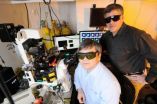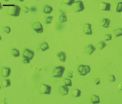(Press-News.org) It will take place on February 15th at the UN headquarters in New York City. Secretary-General Ban Ki-moon plans to attend.
"With unabated greenhouse-gas emissions, humankind would venture into an uncertain future that is much hotter than ever before in its history – so from a scientist's perspective, climate change is a global risk multiplier," says Schellnhuber, director of PIK and chair of the Scientific Advisory Council on Global Change (WBGU) for the German government. Many millions of people could be affected by severe climate change impacts. They range from sea-level rise that increases the frequency of severe coastal flooding, to changes in atmospheric circulation patterns that could trigger, e.g., monsoon failures.
"Most remarkably, Pakistan and the UK together have called this meeting – illustrating, by action, that climate change is an issue for both developing and industrialized countries," Schellnhuber says.
If the international community allows global mean temperature to rise way beyond the 2-degree limit that it agreed upon, major environmental tipping points could be crossed. "The Earth system shows a nonlinear response to greenhouse-gas emissions, so elements like the Amazon rainforest could react drastically if some warming thresholds are passed. This in turn might result in tipping international relations from a situation in which an initial increase of cooperation in face of a crisis shifts into a fierce competition for scarce natural resources, like food," argues Schellnhuber. "However, another kind of social tipping dynamics is imaginable as well – with states, and people, becoming aware of the dangers ahead, and starting the great transformation towards sustainability." One small example for this might be the German Energiewende (a rapid decarbonization of the national energy system).
Schellnhuber is the only scientist invited to the meeting. The other eminent speakers are Tony DeBrum, Minister-in-assistance to the President of the Marshall Islands, Rachel Kyte, Vice President of Sustainable Development at the World Bank, and Gyan Acharya, Under-Secretary General and High Representative of the least developed countries. Some of the issues to be debated are climate change impacts on food security, sustaining cooperative management of freshwater supply in the face of glacial melting and reduced runoff, and possible large-scale displacements of people across borders.
The informal meeting is being convened under the Security Council's Arria formula which allows external experts to be invited to speak to the Council. It was first implemented in 1992 by Venezuela's Ambassador Diego Arria and gained significant importance since then, allowing the Council members greater flexibility. The UN Security Council has twice before deliberated the issue of climate change, under the respective leaderships of the UK and Germany. The Arria formula meeting could help to firmly establish climate change as a security issue on the Council's agenda.
###
For further information please contact:
PIK press office
Phone: +49 331 288 25 07
E-Mail: press@pik-potsdam.de
Climate scientist Schellnhuber to brief UN Security Council
2013-02-15
ELSE PRESS RELEASES FROM THIS DATE:
Math helps detect gang-related crime and better allocate police resources
2013-02-15
Philadelphia, PA—Social groups in a population can lend important cues to law enforcement officials, consumer-based services and risk assessors. Social and geographical patterns that provide information about such communities or gangs have been a popular subject for mathematical modeling.
In a paper published last month in the SIAM Journal on Applied Mathematics, authors use police department records about individuals' social and geographical information to determine gang memberships.
Data on social interactions is particularly hard to come by, but in combination ...
Yale study links common chemicals to osteoarthritis
2013-02-15
New Haven, Conn. – A new study has linked exposure to two common perfluorinated chemicals (PFCs) with osteoarthritis. PFCs are used in more than 200 industrial processes and consumer products including certain stain- and water-resistant fabrics, grease-proof paper food containers, personal care products, and other items. Because of their persistence, PFCs have become ubiquitous contaminants of humans and wildlife. The study, published in Environmental Health Perspectives, is the first to look at the associations between perfluorooctanoic acid (PFOA) and perfluorooctanesulfonic ...
Why cells stick: Phenomenon extends longevity of bonds between cells
2013-02-15
Research carried out by scientists at the Georgia Institute of Technology and The University of Manchester has revealed new insights into how cells stick to each other and to other bodily structures, an essential function in the formation of tissue structures and organs. It's thought that abnormalities in their ability to do so play an important role in a broad range of disorders, including cardiovascular disease and cancer.
The study's findings are outlined in the journal Molecular Cell and describe a surprising new aspect of cell adhesion involving the family of cell ...
Researchers invent 'acoustic-assisted' magnetic information storage
2013-02-15
CORVALLIS, Ore. – Electrical engineers at Oregon State University have discovered a way to use high- frequency sound waves to enhance the magnetic storage of data, offering a new approach to improve the data storage capabilities of a multitude of electronic devices around the world.
The technology, called acoustic-assisted magnetic recording, has been presented at a professional conference, and a patent application was filed this week.
Magnetic storage of data is one of the most inexpensive and widespread technologies known, found in everything from computer hard drives ...
Leading RSV researcher publishes work at Le Bonheur Children's
2013-02-15
Memphis, Tenn. – Studies at Le Bonheur Children's Hospital in Memphis, Tenn., are advancing our understanding of how viruses, including RSV, replicate in humans, mutate to avoid the immune response and can be effectively treated.
John DeVincenzo, MD, medical director of Molecular Diagnostics and Virology Laboratories at Le Bonheur, and professor of Pediatrics and Microbiology, Immunology, and Molecular Biology at The University of Tennessee Health Science Center, has recently published three papers on this topic. DeVincenzo's lab is one of only two of its kind in the ...
Revealing the secrets of motility in archaea
2013-02-15
The protein structure of the motor that propels archaea has been characterized for the first time by a team of scientists from the U.S. Department of Energy's Lawrence Berkeley National Laboratory (Berkeley Lab) and Germany's Max Planck Institute (MPI) for Terrestrial Microbiology.
The motility structure of this third domain of life has long been called a flagellum, a whip-like filament that, like the well-studied bacterial flagellum, rotates like a propeller. But although the archaeal structure has a similar function, it is so profoundly different in structure, genetics, ...
APS applauds President Obama's support of R&D in SOTU
2013-02-15
WASHINGTON, D.C. – The American Physical Society (APS), the nation's largest organization of physicists, commends President Obama's exhortation in his State of the Union Speech that, "Now is the time to reach a level of research and development not seen since the height of the Space Race."
During the Space Race, the nation made huge investments in scientific research, which led to new discoveries, accelerated technological advancements and generated new innovations and businesses.
The President also noted that sequestration -- automatic spending cuts scheduled to occur ...
A dual look at photosystem II using the world's most powerful X-ray laser
2013-02-15
From providing living cells with energy, to nitrogen fixation, to the splitting of water molecules, the catalytic activities of metalloenzymes – proteins that contain a metal ion – are vital to life on Earth. A better understanding of the chemistry behind these catalytic activities could pave the way for exciting new technologies, most prominently artificial photosynthesis systems that would provide clean, green and renewable energy. Now, researchers with the U.S. Department of Energy (DOE)'s Lawrence Berkeley National Laboratory (Berkeley Lab) and the SLAC National Accelerator ...
Noncoding RNAs offer huge therapeutic and diagnostic potential
2013-02-15
New Rochelle, NY, February 14, 2013—As scientists continue to unravel the complexity of the human genome and to uncover vital elements that play a role in both normal physiology and disease, one particular class of elements called noncoding RNAs is gaining a lot of attention. Guest Editor Tom Cech, PhD and Executive Editor Fintan Steele, PhD explore the enormous potential value of this rapidly advancing research area in their Editorial " The (Noncoding) RNA World." The authors introduce a special research section on noncoding RNAs published in the current issue of Nucleic ...
Building healthy bones takes guts
2013-02-15
EAST LANSING, Mich. — In what could be an early step toward new treatments for people with osteoporosis, scientists at Michigan State University report that a natural probiotic supplement can help male mice produce healthier bones.
Interestingly, the same can't be said for female mice, the researchers report in the Journal of Cellular Physiology.
"We know that inflammation in the gut can cause bone loss, though it's unclear exactly why," said lead author Laura McCabe, a professor in MSU's departments of Physiology and Radiology. "The neat thing we found is that a probiotic ...



